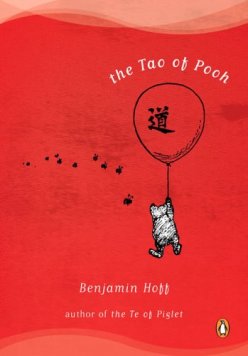Greetings Earthkind!
As part of this class, we are required to publish a weekly response to a prompt given by our professor. This is my sixth prompt response!
Prompt
For your prompt this week, please complete the Readers’ Advisory Matrix, found on the last page of the reading title RA Guide to Nonfiction in the Canvas files, about a non-fiction book you have read.
Response
For this response, I will be using The Tao of Pooh by Benjamin Hoff. You can read the annotation for this book by clicking here.
- Where is the book on the narrative continuum?
- High
- There is lots of dialogue between the author and Winnie the Pooh, and he tells various Winnie the Pooh and Taoist stories.
- An Excerpt (from page 95 in my 158-page hardback copy):
- “Well–here’s Rabbit. ‘Hello, Rabbit. What’s new?’
- ‘I just got back from Owl’s,’ said Rabbit, slightly out of breath.
- ‘Oh? You were certainly gone a long time.’
- ‘Yes, well … Owl insisted on telling me a story about his Great-Uncle Philbert.’
- ‘Oh, that’s why.’
- ‘But anyway–Owl said that he hasn’t seen the Uncarved Block, either, but that Roo is probably playing with it. So I stopped off at Kanga’s house, but no one was there.’
- ‘They’re out in the Forest, practicing jumps with Tigger,’ I said.
- ‘Oh. Well, I’d better be going then.’
- ‘That’s all right, Rabbit, because—‘
- Where’d he go? That’s how it is you know–no rest for the Backson.
- Let’s put it this way: if you want to be healthy, relaxed, and contented, just watch what a Bisy Backson does and then do the opposite.”
- What is the subject of the book?
- Religion, Taoism
- Call Number: 299.514 HOF 1982
- This book is a short course in concepts of Taoism, explained by stories from Winnie the Pooh.
- What type of book is it?
- This book is like an essay, with strong narrative elements.
- Articulate Appeal
- What is the pacing of the book?
- This is a relatively short book, but it moves at a leisurely pace, as though we were taking a stroll through the Hundred Acre Wood.
- Describe the characters of the book.
- The characters include:
- The author (who writes in first person)
- Winnie the Pooh
- Rabbit
- Piglet
- Eeyore
- Owl
- Most of these are characters we are familiar with (if we watched or read Winnie the Pooh growing up). We know their behaviors and attitudes, so the author doesn’t have to describe them in much detail. The conversations that happen between the characters are fictional, but the concepts of Taoism are illustrated through the discussions.
- The really interesting part about characterization in this book is that, even though we know the characters well, we learn more about them as the book goes on (especially how each of them embody certain parts of Taoism or how they don’t embody concepts of Taoism).
- The characters include:
- How does the story feel?
- The story feels leisurely, pleasant, and whimsical.
- The characters are all sitting by the author’s desk and not much happens in that setting, but we learn quite a bit throughout the book. How? Dialogue and retelling of parts of other stories.
- What is the intent of the author?
- To help us learn about Taoism.
- To show us that we can live leisurely, pleasant lives.
- To illustrate how Winnie the Pooh and Taoism are related.
- To help us learn about Taoism.
- What is the focus of the story?
- The focus is on the lives of the main characters and how they demonstrate Taoist concepts.
- Does the language matter?
- Yes.
- The author uses language and specific terms (made up or otherwise) to demonstrate the concepts.
- Is the setting important and well described?
- No and no.
- The setting is irrelevant, though it leaves room for us to imagine it how we want. I pictured the author sitting in something of a hobbit-hole surrounded by the characters at an old writing desk.
- Are there details and, if so, what?
- The whole book is made up of details (just not details of the setting). It takes a through details about stories that demonstrate the Taoist concept of the chapter.
- Are there sufficient charts and other graphic materials? Are they useful and clear?
- There are illustrations by the wonderful Ernest H. Shepard, and they allow us to enjoy the book as though it were just a regular Winnie the Pooh tale.
- Does the book stress moments of learning, understanding, or experience?
- I would argue it doesn’t. This book seems like one to read over and over again to really get a full understanding of what it teaches. The author doesn’t explicitly say, “THIS is what you should get from this chapter.” You either get it or you don’t, and then the author moves on. There’s at least one moment in each chapter where the author just told a story, and then the character from that story walks into the author’s room and illustrates the point again.
- What is the pacing of the book?
Why would a reader enjoy this book (rank appeal)?
- Characterization
- Learning/Experiencing
- Tone
Thank you for taking the time to read this response, and until next time, Happy Reading!
